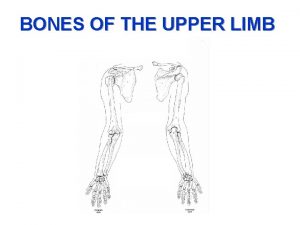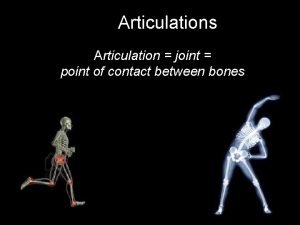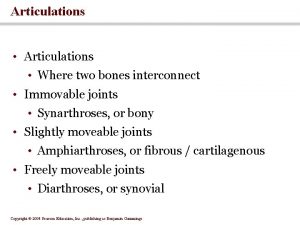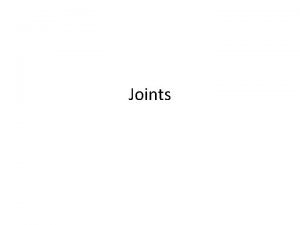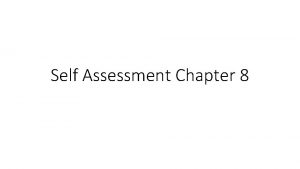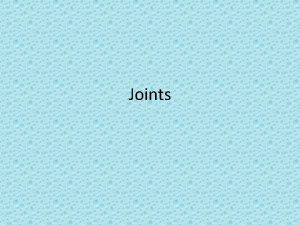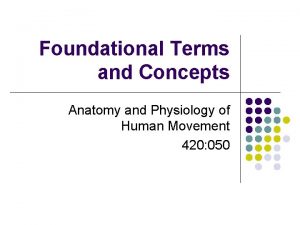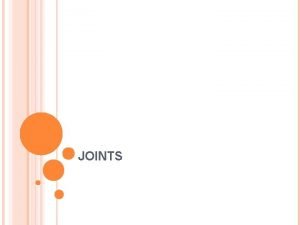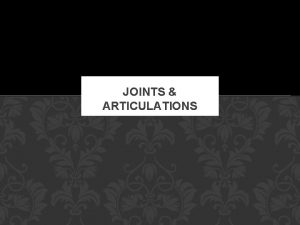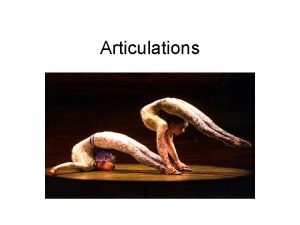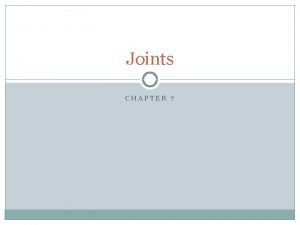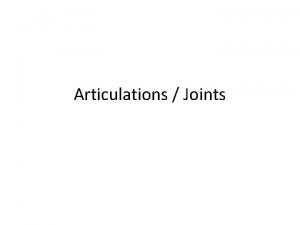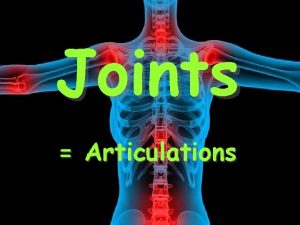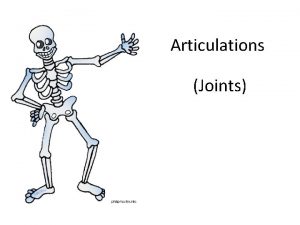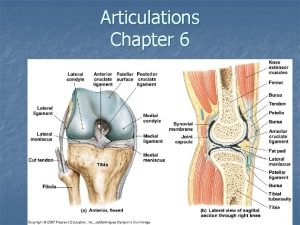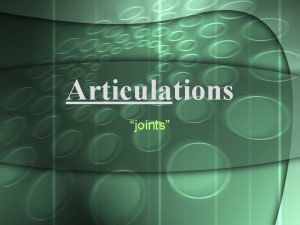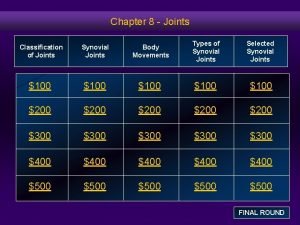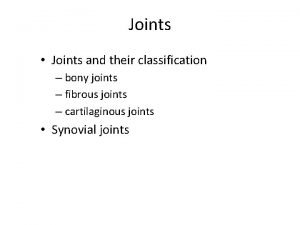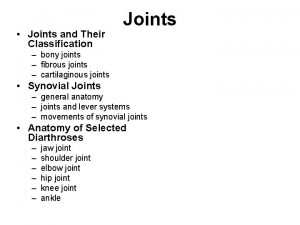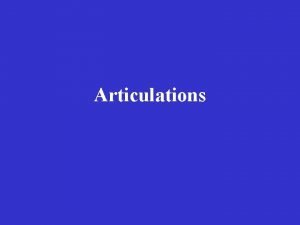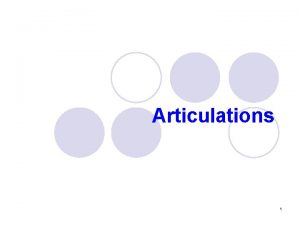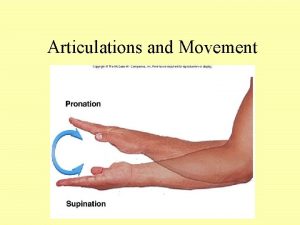Articulations Chapter 8 Classification of Joints Articulations Joint
















- Slides: 16

Articulations Chapter 8

Classification of Joints (Articulations): Joint- Where two bones interact ¨ Three functional classes of joints n Synarthroses ¨ n Amphiarthroses ¨ n Immovable – e. g. , sutures Slightly movable – e. g. , pubic symphysis, distal radius/ulna Diarthroses ¨ Freely movable – e. g. , shoulder, elbow etc.

n Classification of Joints (Articulations): ¨ Three structural classes of joints n Fibrous No space between articulating bones; held together by dense connective tissue – e. g. , sutures, distal radius/ulna ¨ May be functionally synarthroses or amphiarthroses ¨ n Cartilagenous No space between articulating bones; held together by cartilage – e. g. , pubic symphysis ¨ May be funtionally synarthroses or amphiarthroses ¨ n Synovial Space (synovial/joint cavity) between articulating bones – e. g. , shoulder, elbow etc. ¨ Functionally are diarthroses ¨

The Structure of Synovial Joints

The Structure of Synovial Joints

Major synovial joints in the body • spinal (e. g. cervical and lumbar) • shoulder (glenohumeral) • elbow • proximal radio-ulnar • wrist • fingers • hip • knee • ankle/foot • toes • temporomandibular (TMJ)

Movements occurring at synovial joints Flexion Extension Hyperextension

Lateral flexion Abduction Adduction Rt. lateral flexion Lt. lateral flexion

Rotation: Left/Right Medial (internal) Lateral (external)

Pronation Supination

Dorsiflexion/Plantarflexion Inversion/Eversion Elevation/Depression Protraction/Retraction Opposition

Movement at synovial joints occurs through the activity of skeletal muscles

Anatomy of skeletal muscles

Anatomy of the Muscular System • Origin - Muscle attachment that remains fixed • Insertion - Muscle attachment that moves • Action - What movement a muscle produces. Movement usually occurs at joints i. e. flexion, extension, abduction, etc.

• For muscles to create a movement, they can only pull, not push • Muscles in the body rarely work alone, & are usually arranged in groups surrounding a joint • A muscle that contracts to create the desired action is known as an agonist or prime mover • A muscle that helps the agonist is a synergist. Some synergists act as fixators • A muscle that opposes the action of the agonist, therefore undoing the desired action is an antagonist

Skeletal muscle movements Flexion/extension Abduction/adduction Rotation – left/right; internal(medial)/external(lateral) pronation/supination Elevation/depression Protraction/retraction Dorsiflexion/plantarflexion Inversion/eversion *note: muscles of facial expression (e. g. orbicularis oculi; orbicularis oris) produce movements of the features of the face, and therefore the actions use more descriptive terminology
 Function of skull
Function of skull Articulations
Articulations Articulations
Articulations Articulations
Articulations Pivot joint
Pivot joint Figure 6-4 the skeleton axial and appendicular divisions
Figure 6-4 the skeleton axial and appendicular divisions Which joint in the figure is capable of multiaxial movement
Which joint in the figure is capable of multiaxial movement Supination inversion
Supination inversion Structural classification of joints
Structural classification of joints Functional classification of joints
Functional classification of joints Pivot joint analogy
Pivot joint analogy Spool joint vs break joint
Spool joint vs break joint Luschka's joints
Luschka's joints What is a permanent joint
What is a permanent joint Joint venture account is a
Joint venture account is a Break joint vs spool joint
Break joint vs spool joint Fibrous joints
Fibrous joints

